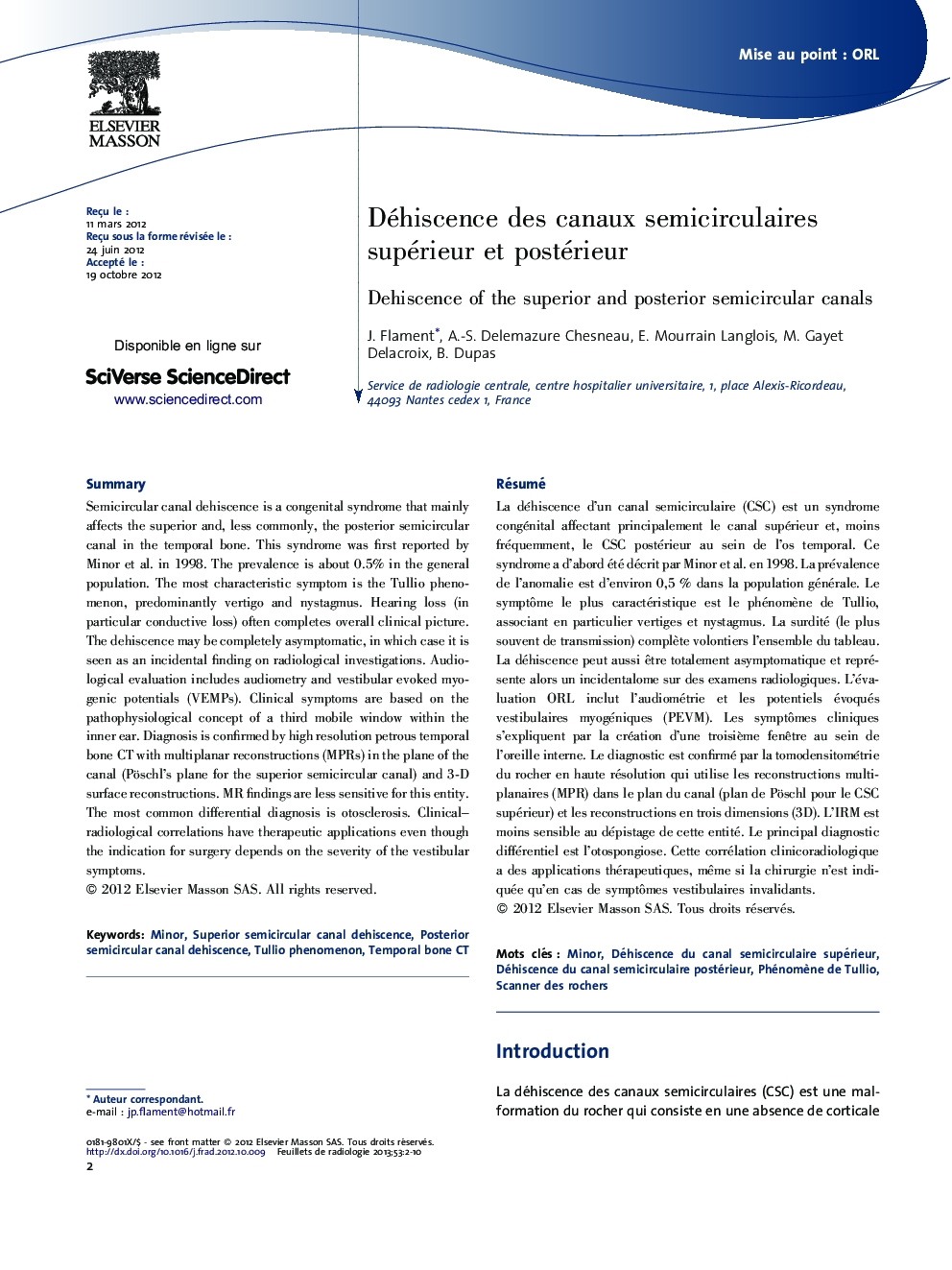| کد مقاله | کد نشریه | سال انتشار | مقاله انگلیسی | نسخه تمام متن |
|---|---|---|---|---|
| 3468930 | 1232730 | 2013 | 9 صفحه PDF | دانلود رایگان |
عنوان انگلیسی مقاله ISI
Déhiscence des canaux semicirculaires supérieur et postérieur
دانلود مقاله + سفارش ترجمه
دانلود مقاله ISI انگلیسی
رایگان برای ایرانیان
کلمات کلیدی
موضوعات مرتبط
علوم پزشکی و سلامت
پزشکی و دندانپزشکی
پزشکی و دندانپزشکی (عمومی)
پیش نمایش صفحه اول مقاله

چکیده انگلیسی
Semicircular canal dehiscence is a congenital syndrome that mainly affects the superior and, less commonly, the posterior semicircular canal in the temporal bone. This syndrome was first reported by Minor et al. in 1998. The prevalence is about 0.5% in the general population. The most characteristic symptom is the Tullio phenomenon, predominantly vertigo and nystagmus. Hearing loss (in particular conductive loss) often completes overall clinical picture. The dehiscence may be completely asymptomatic, in which case it is seen as an incidental finding on radiological investigations. Audiological evaluation includes audiometry and vestibular evoked myogenic potentials (VEMPs). Clinical symptoms are based on the pathophysiological concept of a third mobile window within the inner ear. Diagnosis is confirmed by high resolution petrous temporal bone CT with multiplanar reconstructions (MPRs) in the plane of the canal (Pöschl's plane for the superior semicircular canal) and 3-D surface reconstructions. MR findings are less sensitive for this entity. The most common differential diagnosis is otosclerosis. Clinical-radiological correlations have therapeutic applications even though the indication for surgery depends on the severity of the vestibular symptoms.
ناشر
Database: Elsevier - ScienceDirect (ساینس دایرکت)
Journal: Feuillets de Radiologie - Volume 53, Issue 1, February 2013, Pages 2-10
Journal: Feuillets de Radiologie - Volume 53, Issue 1, February 2013, Pages 2-10
نویسندگان
J. Flament, A.-S. Delemazure Chesneau, E. Mourrain Langlois, M. Gayet Delacroix, B. Dupas,